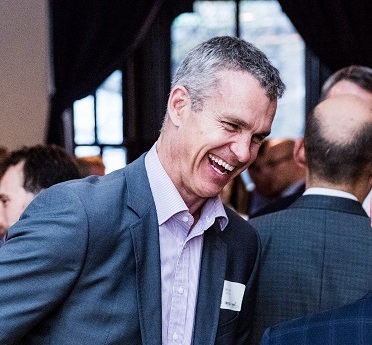GUEST CONTENT
For decades, investment in infrastructure has been viewed as a key mechanism for stimulating economic growth by creating jobs and helping to revitalize communities. Absent an economic crisis, the world typically spends over $2 trillion every year on infrastructure. In light of a global pandemic, stagnant investment, growing unemployment, and rock-bottom interest rates, investment in infrastructure—including our built environment as well as energy, transportation, water and telecom systems—is perceived by many as a prime opportunity to kick start growth.
As Chief Investment Officer at the Canada Infrastructure Bank (CIB), John Casola is at the forefront of key initiatives put in place by the CIB to help drive economic recovery. At GLOBE Capital in April 2021, he joined the Reimagining our Infrastructure session to share the CIB’s progress to date. We caught up with him to learn more about the progress they’ve made over the last three months and what a ‘green recovery’ means for Canada.
As so many others have remarked, we are living in unprecedented times in a plethora of ways. You’ve been in this business for over 20 years now. Have you ever seen so much public attention on infrastructure?
I think infrastructure is currently front and centre for so many reasons. It tends to be a government go-to during down economic cycles, mainly because it provides jobs. I’ve been in this business long enough to see a few of those cycles and I think this time is different. There’s a recognition of the importance of infrastructure for long-term growth, for future well-being, and a recognition of the importance of quality. We’re no longer building things for the sake of building things. All levels of government across the country are really focusing on what’s going to make a long-term difference for their communities, citizens, and growth. They’re not opting for short-term fixes that create jobs, but don’t add anything to society.
“Green recovery” is an ideal that the CIB is truly putting into practice. Could you tell us more about that?
The green part of what we’re doing is critical. Our shareholder, the federal government, has established five priority sectors for us: trade and transportation, public transit, broadband, clean power, and green infrastructure. We have been allocated $35 billion to invest across these sectors, $10 billion of which is dedicated to our Growth Plan. This Plan is our response to the economic slowdown due to the pandemic. It aims to accelerate Canada’s transition to a low-carbon economy and strengthen economic growth.
The past 16 months have shown us the critical need for sustainable infrastructure, and the importance of building up our economy to be resilient in the face of global challenges. At the beginning of the pandemic, our Chair challenged us to come up with a program that we could implement quickly with positive impacts on jobs, the environment, and the economy. We developed the Growth Plan—a $10 billion investment over three years, which is divided into the following components:
- $2.5B for clean power
- $2B for building retrofits
- $1.5B for zero-emission buses
- $2B for broadband
- $1.5B for agricultural infrastructure
- $500M for project acceleration
With eight announcements in the last six months, we have an incredible start and we’re gaining strong momentum.
At GLOBE Capital, the CIB announced an investment of up to $655 million in the Lake Erie Connector project as part of the Growth Plan. How will this investment help reduce greenhouse gas (GHG) emissions?
That’s a fascinating project and a complex one. It provides a two-way highway for power, allowing Ontario’s clean energy producers to sell their power to the U.S. This is important, because emissions don’t recognize borders. The Connector also allows Ontario to buy American power in times of need, as determined by the regulator (Independent Electricity System Operator). This allows us to import clean power, instead of building back-up power sources. The most cost-efficient standby power is natural gas, but thanks to the Connector, we won’t have to rely on that emissions-intensive power source. This project is a win-win for all involved.
What other progress have you made since GLOBE Capital in terms of projects that reduce GHG emissions?
There is lots on the go. I’ll share the ones that are publicly announced to give you some sense of momentum. This is the second time in the last five months that we’ve had to schedule extra board meetings to approve projects, because they’re at that stage where they’re ready for investment. We recently approved an investment of up to $170 million in the Oneida Energy Storage project. Once completed, it will be the largest battery storage project in North America. The project will allow us to store energy that is produced at off-peak times and release it into the grid when demand is high. It will help Ontario reduce GHG emissions by 4.1 million tonnes, or the equivalent of taking 40,000 cars off the road every year. We’re also pleased that the Six Nations of the Grand River Development Corp., a First Nations group, are 50% equity participants in the project.
Other projects we’ve announced include an investment with Algoma Steel Inc. in Sault Ste. Marie, Ont.—up to $220 million to retrofit their operations and phase out coal-fired steelmaking processes. This electricity-based process is expected to reduce GHG emissions by over 3 million metric tonnes per year by 2030. We also recently announced an investment in zero-emission buses with the City of Ottawa—up to $400 million to help purchase approximately 450 buses. This a key initiative to help the city achieve its goal of reducing GHG emissions in its operations by 100% by 2040. We’re seeing lots of interest across the country in electric buses. The pandemic has drastically reduced public transit use, so many municipalities are revising their capital plans. This is where CIB can help. When it comes to sustainability, there is often a gap between the right thing to do and financial support. CIB can help bridge that gap. We can offer capital at an under-market rate of return to make green infrastructure more feasible.
In the race to achieve net zero by 2050, how do we overcome the challenges of political cycles and changing visions and priorities? How do we select the right projects that will maximize economic, environmental, and societal benefits?
Our entire team is very outcomes-focused. Those high-level outcomes are: reducing GHG emissions, connecting Canadians (i.e. broadband and transit), closing the Indigenous infrastructure gap, and improving GDP and jobs. We’re very methodical in choosing projects to invest in and keeping these outcomes top of mind. For example, with our retrofits program, we offer an interest rate between 1 and 3%. The greater the GHG reductions from the retrofit, the lower the interest rate. We want to incentivize people to go deeper.
2050 is less than 30 years away. Looking ahead, what do you see as the biggest challenge and the biggest opportunity in clean infrastructure?
It’s always going to be a challenge to compete with other government programs for scarce tax dollars. I think a lot of us could sit around a table and come up with a list of all the great things we would love for our society to have, but there’s a sprinkling of reality that needs to happen in terms of costs and resources. The challenge is building a consensus around which infrastructure projects to build and finding creative ways to fund them.
Another opportunity is to synchronize the sticks and carrots of government regulation. Carbon pricing is absolutely critical, but it can’t be the only lever. We need to also provide affordable capital.
The other obvious opportunity is broadband. You asked me if I’ve ever heard so much mention of infrastructure? The answer is probably yes. Have I ever heard so much mention of the importance of a broadband network? No, I don’t think I have. The pandemic has shown us that internet access is vital. This isn’t just about YouTube and Netflix. For some remote communities, this is vital for access to healthcare and education.
I truly believe there are some silver threads of good that have come from the pandemic. Increased broadband is one of them. We’re ready to build on that.
For more insights on the road to 2050, join our Destination Net Zero Events:
ENERGY AND TRANSPORTATION DAYS
Sept 28-29, 2021 | Virtual | Complimentary
NATURE AND BIOECONOMY DAYS
Nov 23-24, 2021 | Virtual | Complimentary
GLOBE FORUM
Mar 29-31, 2022 | Host Hub: Vancouver Convention Centre West | Virtual Programming | Partner Hubs Across Canada




